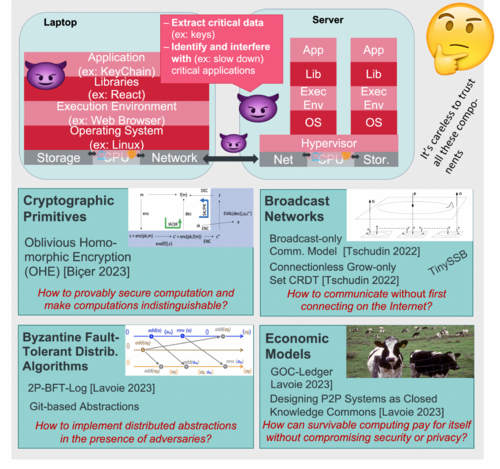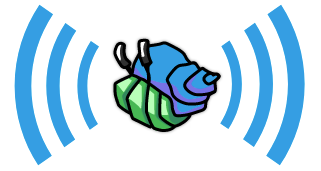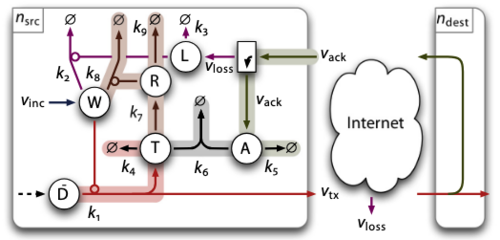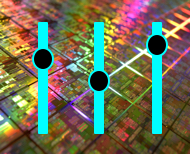Current Projects
Survivable Computing (2022-2027)

Summary:
The goal of this project is to enable secure processing over critical data on general purpose computers after an attacker has gained access to both internal networks and machines. The project has several complementary research angles:
Cryptographic Primitives: Design new cryptographic primitives and improve the practicality of existing ones based on the latest results in several sub-fields of such as secure outsourced computation, homomorphic encryption, secure distributed computation, commitment schemes, etc.
Automatic Program Translation: Automatically translate a set of programs to make the execution of each individual program indistinguishable from that of the others from the same set.
Broadcast Networks: Achieve reliable and peer-to-peer communication without depending on the internet nor centralized services, from the physical up to application layer.
Byzantine Fault Tolerant Distributed Algorithms: Implement reliable distributed abstractions in the presence of Byzantine adversaries.
Economic Model: Incentivize participation to ensure the resulting system is financially sustainable without compromising security and privacy.
Project Members:
Christian Tschudin, Erick Lavoie, Osman Biçer, and Ali Ajorian
tinySSB

tinySSB is a re-design of Secure Scuttlebutt (see https://scuttlebutt.nz/), a landmark system design for decentral and offline-first applications. At the core of this re-design is a fixed-length packet format of 128 Bytes which is small enough to be sent over very frugal communications means like Bluetooth Low Energy, but also Long-range Radio (LoRa) or shortwaves. We use tinySSB as a demonstrator for the power of decentral applications (that still work even when the Internet is down) and as a vehicle to expose Bachelor students with the challenges and the beauty of distributed systems. For more information and software see the Git repository at https://github.com/ssbc/tinySSB
Project Members:
Christian Tschudin
Past Research
Named Function Networking (NFN)
.
CCN-lite

A library for the Content Centric Networking protocol, suitable for embedded devices.
Chemical Networking Protocols

See Thomas Meyer's PhD thesis (2011) at https://edoc.unibas.ch/1280/
ANA - Autonomic Network Architecture

Summary:
This Integrated Project aimed at exploring novel ways of organizing and using networks beyond legacy Internet technology. The ultimate goal was to design and develop a novel network architecture that enables flexible, dynamic, and fully autonomic formation of network nodes as well as whole networks and to allow dynamic adaptation and re-organisation of the network according to the working, economical and social needs of the users. It was especially challenging in a mobile context where new resources were available dynamically, administrative domains change frequently, and the economic models could vary.
Project Page:
http://www.ana-project.org
Project Members:
Christian Tschudin, Christophe Jelger, Ghazi Bouabene
BIONETS - BIOlogically-inspired autonomic NETworks and Services

Summary:
The motivation for BIONETS came from emerging trends towards pervasive computing and communication environments, where myriads of networked devices with very different features enhanced our five senses, our communication and tool manipulation capabilities. The complexity of such environments is not far from that of biological organisms, ecosystems, and socio-economic communities. Traditional communication approaches were ineffective in this context, since they fail to address several new features: a huge number of nodes including low-cost sensing/identifying devices, a wide heterogeneity in node capabilities, high node mobility, the management complexity, the possibility of exploiting spare node resources. BIONETS aimed at a novel approach able to address these challenges.
Project Page:
http://www.bionets.eu/
Project Members:
Christian Tschudin, Lidia Yamamoto, Ghazi Bouabene, Navid Ghazisaidi
Programmable Hardware to Control Network Dynamics

Summary:
Chemistry-inspired algorithms represent a novel approach to control dynamics in networking and communication systems, as well as to generally perform distributed computations. The benefits from using Chemistry- inspired algorithms range from the design to the analysis. This project further investigates on the realisability on hardware of this novel class of algorithms. A very flexible way of implementing an artificial chemistry for networking on FPGAs (Field-Programmable Gate Array) is derived. The provided middleware/abstraction can be used to deploy/program any hardware controller, by simply configuring a few memories.
Project Page:
http://cn.cs.unibas.ch/projects/HWAC/
Project Members:
Massimo Monti, Manolis Sifalakis, Christian Tschudin
Related Projects:
PermaSense

Summary: Project Page: Project Members: |
LUNAR - Lightweight Underlay Network Ad hoc Routing

Summary:
LUNAR offers multihop forwarding in wireless networks by working inside the "ad hoc horizon" where modest protocol effort can be turned into useful functionality and performance. LUNAR works below the IP layer and contains advanced features like automatic address configuration and gatewaying, providing seamless integration into IP networking.
LUNAR has been implemented in several variants, starting in 2001 with an active networking approach, to the Linux user space and kernel module implementations as well as a stripped down version for BlueTooth networks and a version running on the LEGO Mindstorm embedded processors demoed at MobiCom 2002. Available as GPL source code.
Project Page:
http://cn.cs.unibas.ch/projects/lunar/
Project Members:
Christian Tschudin, Christophe Jelger, Richard Gold, Olof Rensfeld, Oskar Wibling
SelNet - Network Pointers

Summary:
Demultiplexing is an essential networking functionality that can be used as the main building block of computer networks. We explore networking architectures where "selectors" are used for steering a network as well as for forwarding data. Network pointers capture the indirection capability of SelNets and permit to "repointer" forwarding paths and to build new network personalities similar to overlays.
Project Page:
http://www.docs.uu.se/selnet/
Project Members:
Christian Tschudin, Richard Gold
Related Projects:
- LUNAR (includes selector forwarding)
- Fraglets (a "selector" processing language)
- Plutarch, Cambridge (for a similar approach)
- NRP - New Routing Paradigms, Paris (theory)
Fraglets

Summary: Project Page: Project Members: |
SEPIS - Synthesis and Evolution of Protocol ImplementationS

Summary:
Self-organisation of networks usually refers to the automatic parametrization of a fixed set of functions and software modules. With SEPIS we explore protocol optimization and network self-organization at the code level. Adding new functionality and recombinations of existing communication services will be part of an automated evolution of complete networks and services, eventually shortcutting the manual design and implementation process of todays network evolution.
Project Members:
Christian Tschudin, Pontus Sköld
